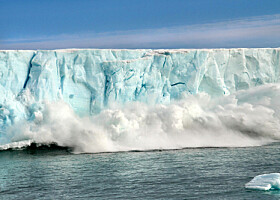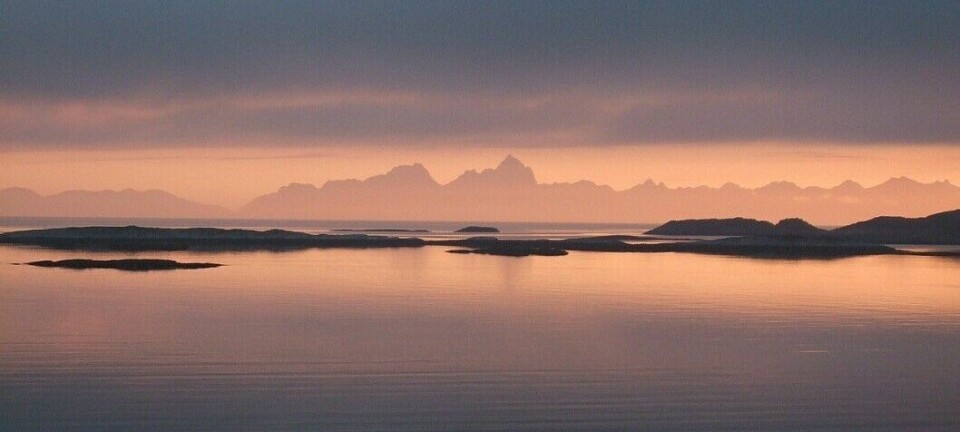
Heatwaves in the ocean alarm climate researchers
Strong temperature spikes in the ocean and massive loss of sea ice in Antarctica concern scientists. Will the climate change faster than anticipated?
The news this summer has been marked by intense heatwaves in southern Europe, the USA, China, North Africa, and South America.
A historic evacuation was initiated in Rhodes as wildfires sent tourists and residents fleeing. Enormous wildfires in Canada blanketed northern parts of the United States in smoke.
Meanwhile, climate researchers are alarmed by changes that are not as visible: Ocean temperatures are at record highs, and the amount of sea ice in Antarctica is exceptionally low.
“Records have been broken by enormous margins, in so many places,” Bjørn Hallvard Samset at the CICERO Center for International Climate Research says.
38 degrees in the water
In the northern part of the Atlantic Ocean, temperatures have been at record levels since March.
Around August 1st, the average surface temperature was 1 degree higher than the previous highest recorded temperature at this time of year. The margin was 10 times larger than the previous record margin, according to Samset.
In the waters off Florida, a temperature of 38 degrees was measured – something that would be normal in a bathtub.
And it is not just in the Atlantic that it's warm. Similar conditions have arisen in the Mediterranean, several tropical regions, and the northwest Pacific.
Since mid-March, the average global sea temperature has been at a record high, considering the season.
Overall, for the entire planet, July was the warmest month ever recorded. It is believed that this was the warmest month in 120,000 years.
Svalbard is the place in the world where warming is happening the fastest. For the first time, it has been warmer than what is considered a polar climate (link in Norwegian).
Five times the size of Sweden
Simultaneously with the high temperatures, the amount of sea ice in Antarctica is historically low. Previous records for this time of year have also been shattered.
The ice that was ‘missing’ in mid-July was equivalent to five times the area of Sweden.
“It’s extreme. I had expected a more gradual development,” researcher Ralf Döscher tells the Swedish news agency TT.
The main reason for the increasingly warm seawater is human-induced global warming, as confirmed by a long list of researchers.
Additionally, the weather phenomenon El Niño is developing. It will likely temporarily intensify warming in parts of the world this year and next year.
“Faster development”
However, some researchers find it difficult to fully explain the measurements of the past few months, even considering global warming and El Niño.
“The development this year has been faster than I feared,” Samset tells NTB.
Several theories have been put forth as ‘additional explanations’ for what is happening. Some point to an underwater volcano in the Pacific that erupted this winter. Enormous amounts of water vapor rose into the atmosphere, and in the atmosphere, water vapor acts as a greenhouse gas.
Others refer to reductions in air pollution from ships and industries in China. Less sulphur is being released, which improves air quality at ground level. However, in the atmosphere, sulphur particles have a cooling effect, and it has now become somewhat smaller.
However, for now, it is uncertain how significant the effect of the volcano and sulphur reduction has been.
“A common feature of these explanations is that they are quite speculative,” Professor Trude Storelvmo at the University of Oslo says.
Stronger effect?
Some scientists argue that warming may have reached a ‘tipping point’, triggering rapid changes in the climate system. So far, there is no evidence that this has occurred.
Another possibility is that the effect of climate emissions is somewhat larger than most researchers have believed. In that case, global warming will proceed faster than expected – and the summer of 2023 might be a glimpse of what’s to come.
Storelvmo studies this effect, known in technical terms as climate sensitivity. She finds it concerning if sensitivity is greater than assumed.
“It will naturally have consequences for the possibilities of reaching climate goals,” she tells NTB.
Both Storelvmo and Samset say there is a risk that the effect of CO2 emissions on the climate is greater than assumed. However, they both emphasise that this is highly uncertain for now.
Samset also doesn't think it is likely. Instead, he believes that the temperature spikes in the ocean might be due to changes in ocean currents.
“Shocking”
Regardless of the explanations, the developments of the past few months have surprised many climate researchers.
“Unprecedented is a word that gets bandied around a lot, but it doesn't really get to just how shocking this is,” researcher Will Hobbs tells The Guardian about the ice loss in Antarctica.
Storelvmo believes that most of what is observed is in line with what has been expected. Still, she describes the many records occurring simultaneously as frightening.
“Perhaps there has been a clinging to the hope that this isn’t as bad as we’ve feared and calculated. But then it turns out that the calculations hold water. It’s actually that bad,” she says.
In the time ahead, it will be crucial for society to adapt to the changes, Samset asserts.
“We are absolutely compelled to adapt to a warmer and wilder climate,” he says.
———
Translated by Alette Bjordal Gjellesvik.






































